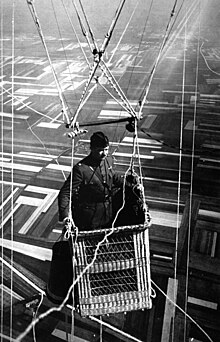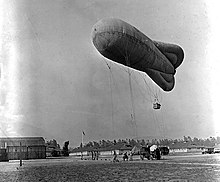
15th Attack Squadron is a United States Air Force unit assigned to the 432d Wing, 732nd Operations Group at Creech Air Force Base near Indian Springs, Nevada. It flies the General Atomics MQ-9 Reaper remotely piloted aircraft.
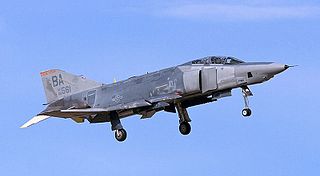
The 91st Cyberspace Operations Squadron is an active United States Air Force unit, currently assigned to the 67th Cyberspace Wing at Kelly Annex, part of Lackland Air Force Base, Texas.
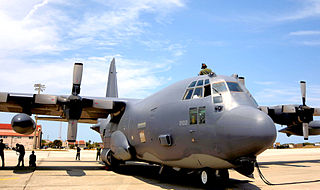
The 102nd Rescue Squadron is a unit of the New York Air National Guard 106th Rescue Wing stationed at Francis S. Gabreski Air National Guard Base, Westhampton Beach, New York. The 102nd is equipped with the HC-130J Combat King II transport aircraft.

The 73rd Special Operations Squadron is a unit of the United States Air Force, assigned to the 1st Special Operations Wing at Hurlburt Field, Florida. The squadron operates the AC-130J Ghostrider ground-attack aircraft in support of Air Force Special Operations Command.

The 119th Fighter Squadron is a unit of the New Jersey Air National Guard 177th Fighter Wing located at Atlantic City Air National Guard Base, New Jersey. The 119th is equipped with the F-16 Fighting Falcon aircraft and is the oldest active flying fighter squadron in the Air National Guard.

The 1st Airborne Command Control Squadron is part of the 595th Command and Control Group at Offutt Air Force Base, Nebraska. It operates the Boeing E-4 aircraft conducting airborne command and control missions.

The 99th Reconnaissance Squadron is a squadron of the United States Air Force. It is assigned to the 9th Operations Group, Air Combat Command, stationed at Beale Air Force Base, California. The squadron is equipped with the Lockheed U-2 Dragon Lady reconnaissance aircraft.

The 2nd Air Refueling Squadron, sometimes written as 2d Air Refueling Squadron, is a unit of the United States Air Force. It is part of the 305th Air Mobility Wing at McGuire Air Force Base, part of Joint Base McGuire-Dix-Lakehurst, New Jersey. The 2nd Air Refueling Squadron is the second-oldest squadron in the Air Force, having over 100 years of service to the nation. It was deployed to the Philippines after World War I, during the 1941-1942 Battle of the Philippines, it was wiped out, with the Japanese forcing some of the personnel to endure the Bataan Death March. It was re-formed as an air refueling squadron by Strategic Air Command in 1949. Today, it operates the KC-46 Pegasus aircraft, conducting aerial refueling missions.

The 16th Electronic Warfare Squadron is an active United States Air Force unit. It is assigned to the 350th Spectrum Warfare Group at Eglin Air Force Base, Florida. The squadron began as the 16th 16th Aero Squadron and redesignated several times over its history with the 16th Aero Squadron, 16th Reconnaissance Squadron, and the 16 Photographic Reconnaissance Squadron being the major redesignations.

The 911th Air Refueling Squadron is part of the 305th Operations Group, and is stationed at Seymour Johnson Air Force Base, North Carolina. The squadron was the Air Force's first active duty squadron under the command of a reserve wing. In October 2016, the 911th, formerly geographically separated from the 6th Air Mobility Wing at MacDill Air Force Base, Florida and operated as the active duty associate to the 916th Air Refueling Wing, became the first "I-Wing" or Integrated Wing. In July 2020, it was reassigned to the 305th Operations Group at the McGuire AFB entity of Joint Base McGuire–Dix–Lakehurst, New Jersey.

The 436th Training Squadron is a non-flying training squadron of the United States Air Force. The 436th Training Squadron, located at Dyess Air Force Base, Texas, is a geographically separated unit within Air Combat Command’s 552nd Air Control Wing, at Tinker Air Force Base, Oklahoma.

The 41st Electronic Combat Squadron is a United States Air Force unit. Its current assignment is with the 55th Electronic Combat Group at Davis–Monthan Air Force Base, Arizona as a geographically separated unit from its parent wing, the 55th Wing at Offutt Air Force Base, Nebraska. It operates the Lockheed EC-130H Compass Call communications-jamming aircraft.

The 24th Fighter Squadron is a United States Air Combat Command unit, assigned to the 495th Fighter Group at Naval Air Station Joint Reserve Base Fort Worth, Texas. The squadron was activated in 2019 and flies the F-35A as an active associate unit of the 457th Fighter Squadron.

The 429th Attack Squadron is a classic associate squadron, stationed at Holloman Air Force Base, New Mexico. It is geographically separated from its parent 926th Wing at Nellis Air Force Base, Nevada.

The Second Bombardment Wing, abbreviated as 2nd Bombardment Wing of the United States Army Air Forces is a disbanded unit whose last assignment was with the Continental Air Forces, based at McChord Field, Washington. It was last active in November 1945.

The 489th Attack Squadron is an active United States Air Force unit, stationed at Creech Air Force Base, Nevada, and operating MQ-1 and MQ-9 unmanned aerial vehicles. It was active at Beale Air Force Base, California as the 489th Reconnaissance Squadron from 2011 to 2015.

The 3rd Special Operations Squadron is part of the 27th Special Operations Group of the Air Force Special Operations Command at Cannon Air Force Base, New Mexico. It flies MQ-9 Reaper unmanned combat aerial vehicles or "drones"; the 3rd SOS is the first Remotely Piloted Aircraft (RPA) squadron within the AFSOC.
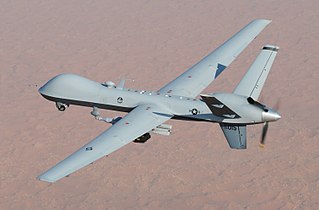
The 50th Attack Squadron is a squadron of the United States Air Force, stationed at Shaw Air Force Base, South Carolina, where it operates the General Atomics MQ-9 Reaper unmanned aerial vehicle. It is assigned to the 25th Attack Group, also at Shaw, and is a component of the 432d Wing, located at Creech Air Force Base, Nevada.

The 22d Intelligence Squadron is a non-flying squadron of the United States Air Force. It is assigned to the 691st Intelligence, Surveillance and Reconnaissance Group, Fort George G. Meade, Maryland.

The Organization of the Air Service of the American Expeditionary Force on 11 November 1918, represents its maximum strength in World War I. Units of the Air Service are listed as assigned to the order of battle for that date, which was that of the Armistice with Germany. The first air unit arrived in France in September 1917, while the final air unit reaching the front did so on 9 November 1918. Unit operations began in April 1918. At the armistice, 57,508 officers and men served in the Air Service of the AEF, 24,512 in the Zone of Advance, and 32,996 in the Services of Supply. Of its 6,861 officers, 4,088 were on flying status and 219 were qualified observation balloon aviators. 1,724 of those on flying status and approximately 100 of the balloonists served in combat units.



